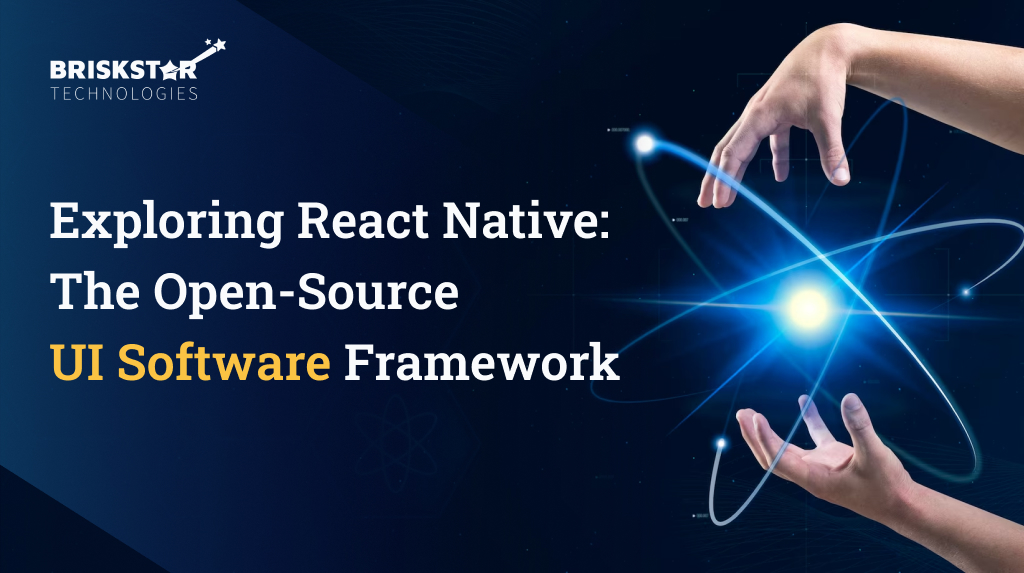Exploring React Native: The Open-Source UI Software Framework
Built upon Facebook’s JavaScript library, React Native stands out with its appealing designs and user-friendly interface. Unlike React, which primarily focuses on websites, React Native is tailored for mobile applications. In other words, current web developers proficient in React can seamlessly transition to crafting mobile apps using React Native—a framework that aligns with their existing expertise.
Moreover, React Native features a fully native interface, enabling the sharing of code across different platforms. This not only streamlines the development process but empowers a solo developer to efficiently reuse code and create applications for both Android and iOS platforms.
One of React Native’s standout features is its incorporation of a fully native interface, facilitating code sharing across different platforms. This not only streamlines the development process but also enables a single developer to reuse code efficiently, crafting applications for both Android and iOS platforms.
What is React Native?
React Native is a cross-platform development framework that allows you to build applications for iOS and Android using a single codebase. Unlike hybrid frameworks that render content inside webviews, React Native renders using native components, which leads to significantly better performance and a more native-like user experience.
While React is used for creating interactive UIs for web browsers, React Native takes that core philosophy and applies it to the mobile world. The key idea is “learn once, write anywhere”, meaning that developers familiar with React can easily adapt to mobile app development without having to learn new languages like Swift (iOS) or Kotlin/Java (Android).
Benefits of Using React Native
React Native offers numerous advantages, making it one of the most preferred frameworks for mobile development.
1. Developer Efficiency
React Native provides a developer-friendly environment with tools like Hot Reloading, which allows developers to see changes in real-time without rebuilding the entire application. This dramatically accelerates development time.
2. Cross-Platform Compatibility
One of React Native’s biggest selling points is its write once, deploy everywhere capability. Most of the code written in React Native can be reused across iOS and Android platforms, saving time, effort, and cost.
3. Rich Ecosystem and Community Support
With strong backing from Facebook and a vast developer community, React Native has a rich ecosystem of libraries, third-party plugins, and community-contributed packages that speed up development and solve common problems.
4. Smooth UI and Native Performance
Unlike traditional hybrid frameworks that compromise on performance, React Native uses native components under the hood, providing smoother animations and better responsiveness—closer to the performance of a native app.
5. Third-Party Plugin Integration
Need access to the device’s camera, location services, or file system? React Native supports easy integration with third-party native modules, allowing you to extend your app’s capabilities without starting from scratch.
Pros and Cons of React Native: A Deep Dive into Mobile App Development
React Native has become a go-to framework for developers looking to build cross-platform mobile applications with a native look and feel. Backed by Facebook and used by companies like Instagram, Tesla, and Shopify, it has built a strong reputation for being flexible, efficient, and scalable.
But as with any technology, it has its strengths and weaknesses. Whether you’re a CTO evaluating frameworks or a developer trying to choose your next tech stack, it’s crucial to weigh both the benefits and the limitations before fully committing.
Let’s dive into a detailed breakdown of React Native’s pros and cons to help you make an informed decision.
Pros of React Native
1. Ease of Use & Developer Productivity
React Native is praised for its developer-friendly approach. It uses JavaScript, one of the most popular and widely-used programming languages. This means that developers coming from a web background can get up and running quickly without needing to learn Swift or Kotlin.
React Native also follows a component-based structure similar to React, which promotes clean code architecture and reusability. Additionally, features like Hot Reloading allow developers to instantly see the results of their code changes, significantly reducing iteration time.
2. Universal Compatibility Across Platforms
One of React Native’s biggest advantages is its cross-platform capability. With a single codebase, developers can create apps for both Android and iOS. This not only streamlines development but also simplifies maintenance and future updates.
React Native ensures that apps deliver a consistent user experience across platforms. It uses platform-specific components where necessary but hides the complexity behind a unified API.
3. Code Reusability Saves Time & Effort
React Native allows developers to reuse up to 90% of their codebase between Android and iOS. This results in significant savings in both development time and resources.
Additionally, if you’re also building a web app with React, there’s potential to share logic, services, and even some UI components between web and mobile apps with frameworks like React Native Web.
4. Strong Third-Party Plugin Support
React Native offers seamless integration with third-party plugins and native modules, allowing you to extend your app’s functionality without reinventing the wheel. Whether it’s integrating with device hardware (GPS, Camera, Sensors) or using custom animations, the rich plugin ecosystem speeds up development.
React Native supports two types of plugins:
Example: Need a map in your app? Use libraries like react-native-maps that work flawlessly across platforms.
5. Smooth UI and High Performance for Most Use Cases
React Native renders UI using native components, unlike web-based hybrid frameworks that rely on webviews. This means your app behaves and looks like a native app—offering smoother animations, better responsiveness, and faster user interactions.
With tools like Reanimated and Gesture Handler, developers can create near-native user experiences even for complex interactions.
Cons of React Native
1. Performance Limitations Compared to Native Apps
Although React Native offers near-native performance for most applications, it still can’t completely match the speed and efficiency of fully native apps, especially for CPU- or GPU-intensive tasks like:
-
Real-time animations
-
Augmented reality
-
Video editing
-
Advanced gaming
React Native adds a JavaScript bridge between the native layer and the logic layer, which can become a bottleneck in performance-heavy use cases.
2. Challenges with Complex and Custom Interfaces
While React Native handles most UI tasks well, highly customized UIs or apps with complex screen transitions, deep animations, or fine-grained interactions can be tricky to implement. You might need to:
This increases development complexity and can diminish the benefits of using a unified framework.
3. Debugging and Tooling Issues
Debugging in React Native can sometimes be less intuitive than in native development. Because the framework acts as a middle layer between JavaScript and native code, issues can become hard to trace.
Though tools like Flipper, React DevTools, and Chrome Debugger help, they still might not cover complex native module issues or platform-specific bugs.
Conclusion
React Native continues to gain traction as a reliable, efficient, and flexible solution for cross-platform mobile app development. It empowers developers to build native-quality apps using a familiar JavaScript and React syntax, reducing the learning curve and development overhead.
Whether you’re a startup aiming to launch quickly or an enterprise streamlining your mobile stack, React Native can be a powerful ally. It’s not a silver bullet, but with the right use case, it can significantly accelerate your time-to-market and reduce costs—without compromising on user experience.
![circle-shapes]()












